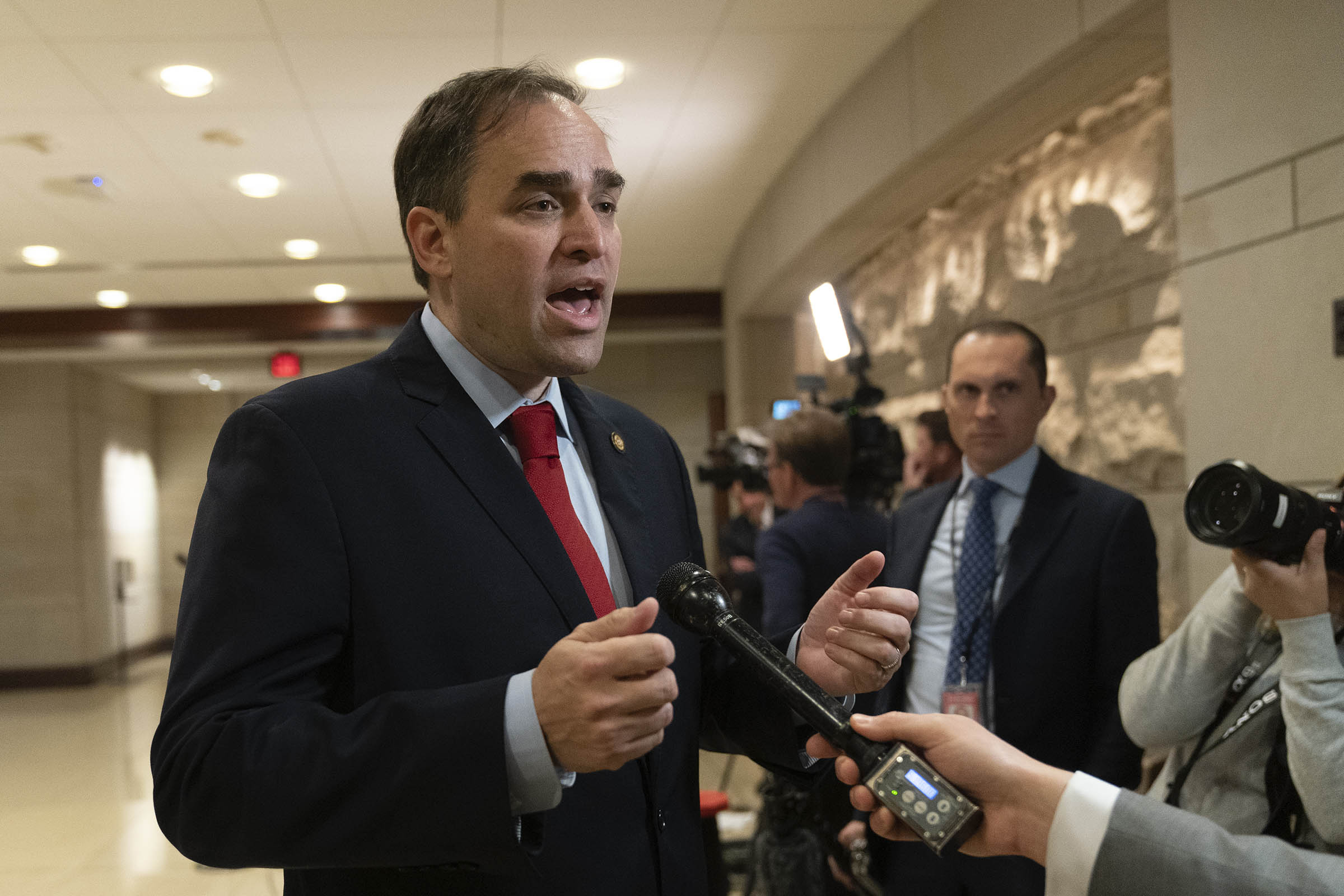The PGA Tour wraps up its regular season at the Wyndham Championship. At stake is the top 70 advancing to the FedEx Cup playoffs. Jordan Spieth is back in the field trying to fortify his position in the FedEx Cup. Ryder Cup captain Keegan Bradley also is playing. This also is the week for the final major of the year. The Women’s British Open is at Royal Porthcawl in Wales. Nelly Korda is still searching for her first win this year. The attention shifts to Lottie Woad. She won the Women’s Scottish Open last week in her professional debut.
—
PGA Tour
WYNDHAM CHAMPIONSHIP
Site: Greensboro, North Carolina.
Course: Sedgefield CC. Yardage: 7,131. Par: 70.
Prize money: $8.2 million. Winner’s share: $1.476 million.
Television: Thursday-Friday, 3-6 p.m. (Golf Channel); Saturday-Sunday, 1-3 p.m. (Golf Channel), 3-6 p.m. (CBS).
Defending champion: Aaron Rai.
FedEx Cup leader: Scottie Scheffler.
Last week: Kurt Kitayama won the 3M Open.
Notes: This is the final tournament of the regular season that decides which 70 players advance to the FedEx Cup playoffs. … Scottie Scheffler already has clinched the $10 million bonus for leading the regular season in points. … Jordan Spieth has added this tournament to his schedule to boost his FedEx Cup standing and help his Ryder Cup cause. … Ryder Cup captain Keegan Bradley is the only player from the top 10 in the field. But this week is more about the FedEx Cup. Only seven players between No. 31 and No. 70 are skipping the event. The top 50 after the first playoff event get into all the signature events. Wyndham Clark (No. 48) and Min Woo Lee (No. 49) are among those not playing. … Last year Aaron Rai went from No. 53 to No. 25 by winning the Wyndham Championship. He made it to the Tour Championship for the first time. … Robert MacIntyre of Scotland, at No. 15, can earn Ryder Cup points this week.
Next week: FedEx St. Jude Championship.
Online: https://www.pgatour.com/
___
LPGA Tour and Ladies European Tour
AIG WOMEN’S BRITISH OPEN
Site: Porthcawl, Wales.
Course: Royal Porthcawl GC. Yardage: 6,580. Par: 72.
Television: Thursday-Friday, 7 a.m. to 2 p.m. (USA Network); Saturday-Sunday, 7 a.m. to noon (USA Network), noon to 2 p.m. (NBC).
Prize money: $9.5 million. Winner’s share: $1.425 million.
Defending champion: Lydia Ko.
Race to CME Globe leader: Jeeno Thitikul.
LET Order of Merit: Mimi Rhodes.
Last week: Lottie Woad won the ISPS Handa Women’s Scottish Open.
Notes: This is the fifth and final major of the year on the LPGA. … The LPGA has played 19 tournaments with a different winner, the longest it has gone without a multiple winner in its 75-year history. … Royal Porthcawl has hosted the Senior British Open three times and the British Amateur seven times. It also is where Great Britain & Ireland defeated a U.S. team with Tiger Woods in the 1995 Walker Cup. … Lottie Woad has won twice and missed a playoff by one shot in a major in her last three tournaments, two of them as an amateur. … Nelly Korda has gone 12 tournaments this year without a win. She is still No. 1 in the women’s world ranking and No. 6 in the Race to CME Globe. … The LPGA has gone 13 consecutive majors with different winners. … This is the 25th year the Women’s British Open has been a major on the LPGA. It replaced the du Maurier Classic in Canada in 2001.
Next week on the LET: PIF London Championship.
Next LPGA tournament: The Standard Portland Classic on Aug. 14-17.
Online: https://www.lpga.com/ and https://ladieseuropeantour.com/
___
Korn Ferry Tour
UTAH CHAMPIONSHIP
Site: Ogden, Utah.
Course: Ogden Golf & CC. Yardage: 7,045. Par: 71.
Prize money: $1 million. Winner’s share: $180,000.
Television: Thursday-Saturday, 6-9 p.m. (Golf Channel); Sunday, 7-9 p.m. (Golf Channel).
Previous winner: Karl Vilips.
Points leader: Johnny Keefer.
Last week: Johnny Keefer won the NV5 Invitational.
Next week: Pinnacle Bank Championship.
Online: https://www.pgatour.com/korn-ferry-tour
___
European Tour
Last tournament: Scottie Scheffler won the British Open.
Next week: Nexo Championship.
Race to Dubai leader: Rory McIlroy.
Online: https://www.europeantour.com/dpworld-tour/
___
LIV Golf League
Last week: Joaquin Niemann won LIV Golf UK.
Next week: LIV Golf Chicago.
Points leader: Joaquin Niemann.
Online: https://www.livgolf.com/
___
PGA Tour Champions
Last week: Padraig Harrington won the Senior British Open.
Next week: Boeing Classic.
Charles Schwab Cup leader: Miguel Angel Jimenez.
Online: https://www.pgatour.com/pgatour-champions
___
Other tours
Epson Tour: Four Winds Invitational, South Bend CC, South Bend, Indiana. Previous winner: Yahui Zhang. Online: https://www.epsontour.com/
Japan Golf Tour: Richard Mille Charity Tournament, Noto CC, Ishikawa, Japan. Defending champion: New tournament. Online: https://www.jgto.org/en/
Challenge Tour: Farmfoods Scottish Challenge, Schloss Roxburghe, Heiton, Scotland. Previous winner: Brandon Robinson Thompson. Online: https://www.europeantour.com/hotelplanner-tour/
PGA Tour Americas: Osprey Valley Open, TPC Toronto (Heathlands), Caledon, Ontario. Defending champion: New tournament. Online: https://www.pgatour.com/americas
Legends Tour: Staysure PGA Seniors Championship, Trump International GL, Aberdeen, Scotland. Defending champion: Robert Coles. Online: https://www.legendstour.com/
Korea LPGA: Aurora World Ladies Championship, Aurora Golf Resort, Wonju, South Korea. Defending champion: New tournament. Online: https://klpga.co.kr/web/














